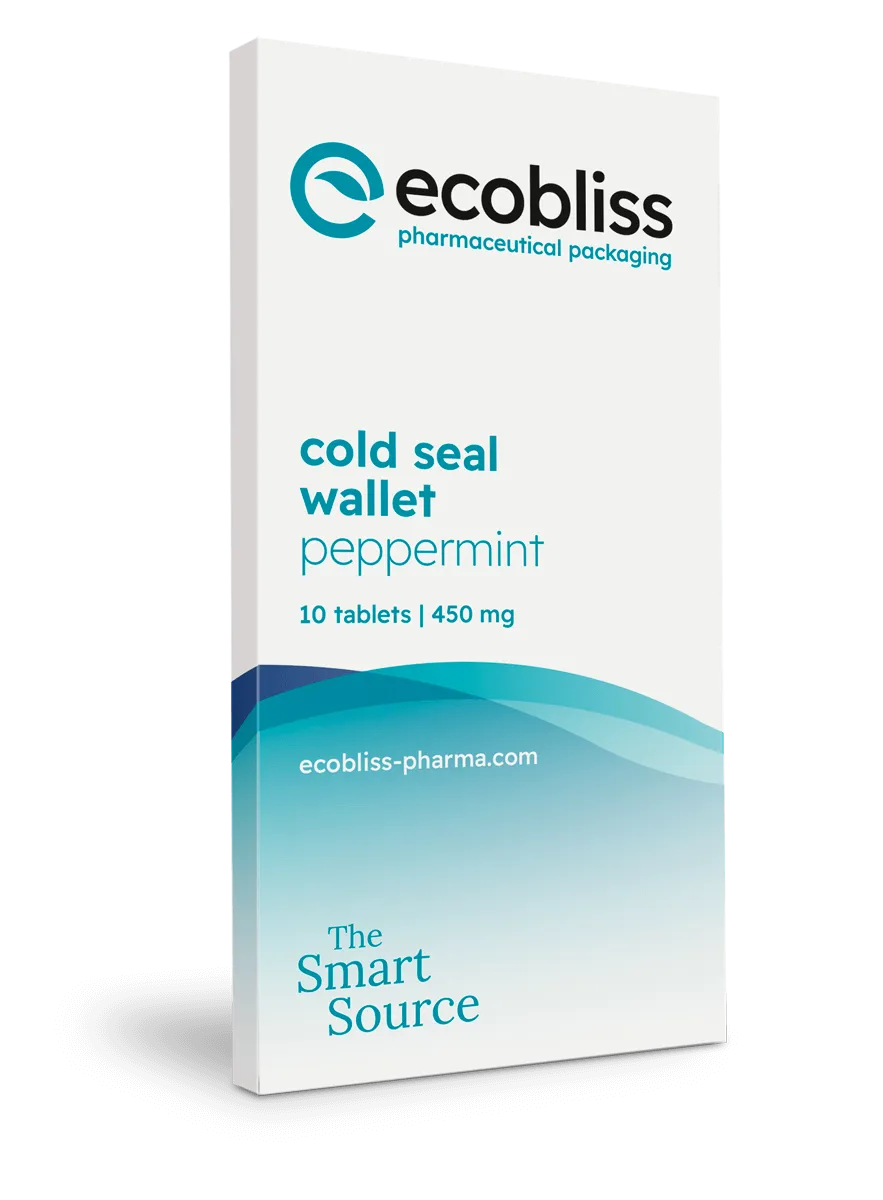Sustainability and efficiency are increasingly at the forefront of packaging decisions. That's where cold seal technology comes in. It's a surprisingly simple, yet incredibly versatile solution that eliminates the need for heat during the sealing process. Let's explore what cold seal is, why it's gaining popularity, how it could benefit your products – especially in the pharmaceutical industry – and delve into the technical advantages it holds over traditional methods.
What is cold seal packaging?
Here's the basic idea:
- Specialized adhesive: Instead of heat-activated adhesives, cold seal uses a water-based formula that bonds securely with pressure alone.
- The process: This adhesive is pre-applied to packaging materials such as board. When those materials are brought together and pressure is applied, voila – a strong, reliable seal!
Why cold seal is a standout
Cold seal packaging offers a range of advantages that make it an appealing solution for various industries, including pharmaceuticals:
- Protection for sensitive products: Heat-sensitive medications, foods, delicate components, or even moisture-sensitive items benefit from a sealing process that doesn't rely on high temperatures.
- Sustainability: Cold seal eliminates the energy needed for heat-based sealing, reduces potential damage to heat-sensitive materials, and often allows for the use of recycled or recyclable components.
- Streamlined production: Faster sealing times compared to traditional methods can boost efficiency and get your products out the door quicker.
- Worker-friendly: No hot surfaces or heating elements mean a safer and more comfortable work environment.
- User-centric: In pharmaceuticals, cold seal can aid with easy-open designs, which is especially important for patients with limited dexterity.
Where cold seal shines
Let's look at some sectors where cold seal packaging excels:
- Pharmaceuticals: Protecting medications, ensuring sterility of medical devices, and offering patient-friendly packaging.
- Food and beverage: Maintaining freshness and extending shelf life of items like snacks, protein bars, and heat-sensitive chocolates.
- Consumer goods: Securely packaging cosmetics, small electronics, and other products where heat could be a concern.
Technical comparison: Cold seal vs. Traditional seal
To fully appreciate the benefits of cold seal, let's contrast it with traditional heat-based sealing techniques:

Focus on pharmaceuticals: Why it matters
In the pharmaceutical world, cold seal packaging offers several distinct benefits:
- Safeguarding drug integrity: No risk of heat compromising the effectiveness or stability of sensitive medications.
- Compliance-friendly: Cold seal can create tamper-evident seals and provide ample space for labeling requirements.
- Sustainability goals: Pharmaceutical companies can reduce their environmental footprint with more energy-efficient packaging choices and the potential for recyclable materials.
The Ecobliss advantage
Ecobliss takes cold seal technology to the next level with a focus on eco-conscious solutions:
- Recyclability: Their cold seal aligns with a circular economy by facilitating the use of recycled materials and enabling easier separation of packaging components after use.
- Minimal material use: Ecobliss solutions often allow for optimizing packaging designs to ensure protection while reducing excess waste.
- Chemical safety: Water-based adhesives reduce reliance on potentially harmful solvents.
In an era focused on responsible choices, cold seal packaging is a clever answer. If you prioritize efficiency, sustainability, and product protection, it's a technology worth exploring. As the demand for eco-friendly packaging grows, cold seal is positioned to become increasingly prevalent across various industries.
Curious about how cold seal could streamline your packaging process and support your sustainability goals? Get in touch with Ecobliss for tailored solutions.
Request a free sample now!





.avif)


